John Hurrell – 19 October, 2023
There is a pointed parallel between this outer space earth-astronaut separation and the distance between Coromandel and Auckland. The space in the gallery is strangely empty as you ponder the enclosing brown strip with its subtly tactile surface, and imagined filthy floodwater, slopping around contained between the walls.
In this new Andrew Barber installation, downstairs in the big Two Rooms space, one large painting made of stitched-together tilted drop-cloth squares, stands in the middle of the otherwise empty gallery. Some parallel orange bars run off a couple of the sections of scungy splattered fabric. A third of the way up the painting’s height-on both back and front—and along the surrounding walls at the same level, is a wide band of gritty brown paint alluding to the wall stains of flood-transported river silt.
The installation references the recent (Cyclone Gabrielle) floods in Coromandel, where Barber has his home. Its presence in the gallery forces one to imagine such a catastrophe happening in Arch Hill or Grey Lynn.
Such a mental act links the gallery viewer to Barber’s title, which comes from a book of interviews the writer Frank White did with a group of astronauts. When they are describing viewing the planet earth from a distance, local detail (the individuality of a particular geographic place focussed on; Europe and Australia seem interchangeable) gets lost—while he writes of ‘the striking thinness of the atmosphere’ that emphasises the earth’s fragility, an oblique allusion to climate change.
There is a pointed parallel between this outer space earth-astronaut separation and the distance between Coromandel and Auckland. The space in the gallery is strangely empty as you ponder the enclosing brown strip with its subtly tactile surface, and imagined filthy floodwater, slopping around contained between the walls.
Barber also creates other poetic resonances, where the painting becomes a kind of flat planet we can circle around, maybe a symbol for the activity of art-making, the airy spatial separation a symbolic hint of the alienation many practices have from the general public, and the flat vertical (one-sided) plane perhaps a reference to the difficulty of trying to encounter a puzzling work head on-and not gradually, tangentially or from an angle.
The large freestanding painting of stitched ‘diamonds’ of stained and dripped drop-cloth might allude to the composite and serial nature of painting, its avaricious appetite for embracing many sources, a range of variations on a single theme, and multiple versions within a serial sequence; while the painting’s low band of gritty mud stresses the vulnerable materiality of all art—its dependence on continued cultural support, lucky forces of history and reliable geographic / geologic / climatic / political stability. Ingredients essential for its ongoing preservation and appreciation.
John Hurrell
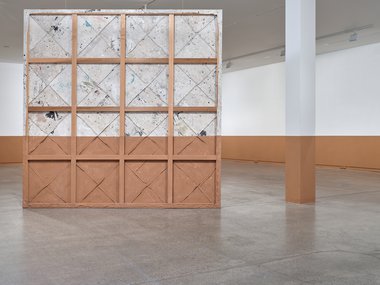
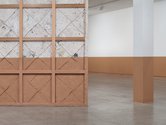

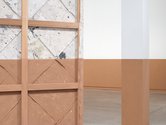
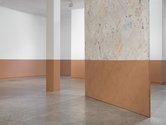
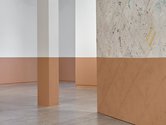
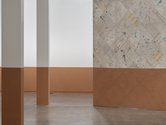


 Two Rooms presents a program of residencies and projects
Two Rooms presents a program of residencies and projects Advertising in this column
Advertising in this column



This Discussion has 0 comments.
Comment
Participate
Register to Participate.
Sign in
Sign in to an existing account.